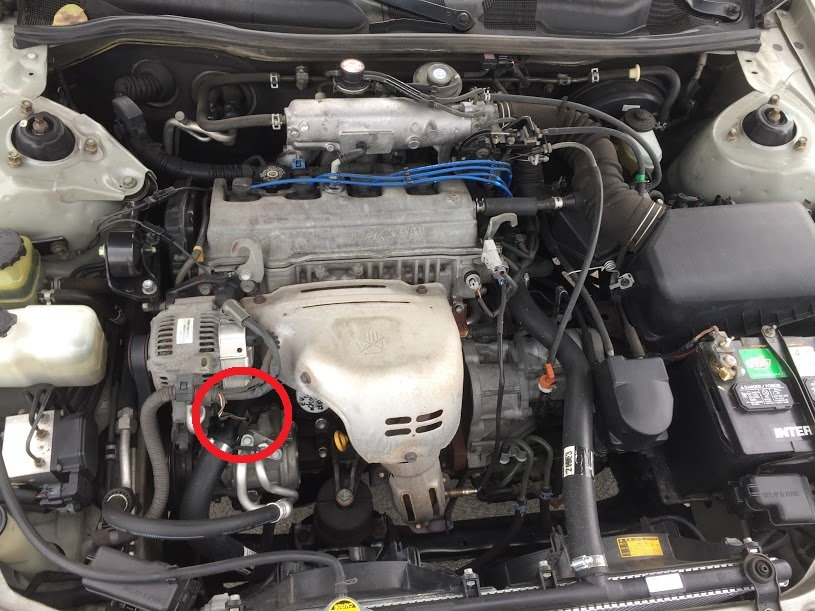Toyota Camry 1997-2001: Why is My Car Overheating?
Why your car is overheating can be traced to a few locations under the hood. Let's take a look and see if we can find the source of the problem.
This article applies to the Toyota Camry (1997-2001).
Nothing quite sparks alarm like watching your temperature gauge rise steadily as you drive down the street or the highway. The reasons for that reality are varied. Whether it's from a faulty thermostat, a leaky hose, or a worn out water pump, overheating is never fun. This article will look at a couple of them and try to point to some quick, painless and inexpensive solutions.

Materials Needed
- Screwdriver
- Miscellaneous wrenches
- Metric socket set and ratchet
- Flashlight
- Jack and jack stands
- Pry tool or similar (optional)
Never work on an engine that has just been run, you're more likely to break things and burn yourself.
Step 1 – Check your car's coolant reservoir
Too little fluid in your coolant reservoir would indicate that there is not enough coolant flowing through your engine, and thus causing it to overheat.

Step 2 – Replace your thermostat
It's quite possible your thermostat is not working properly and needs to be replaced. If the element inside the thermostat fails to open, coolant will not flow through the engine, causing it to overheat. Additionally, if the thermostat is malfunctioning, your cooling fans, which are crucial at low speeds in keeping air flowing through the radiator, may not work. Thermostats are cheap to replace, and not particularly difficult to do on the Camry. For something like a thermostat, it is highly recommended the use of OEM parts.

(Related Article: How to Replace Thermostat and Radiator Hoses - CamryForums.com)
Step 3 – Check the switch at the bottom of your radiator
Your fans have their own temperature switch. It is located at the bottom of your radiator. If the temperature switch malfunctions, the cooling fans may not kick on. Cooling fans are especially important in low speed driving or idling in traffic; without them, minimal air would flow through the radiator, allowing the temperature to raise. Unplug the switch and then turn your ignition key on. If the fans come on, then your problem is your switch. You will need to replace it, as it is causing your fans to malfunction and your car to overheat.
Step 4 – Check for leaks
Hairline cracks can leak. The leak may be small at first, but they can grow over time and cause your car to overheat. Look around the radiator as well as the upper and lower radiator hoses for signs of a leak. Regarding the hoses, give them the squeeze test. Radiator hoses are made of rubber, and should have some amount of give or squeeze to them. If your hoses are stiff as a rock and lined with cracks, it's time to replace them.

Step 5 – Check your water pump for any problems
There are two things to do here:
- First, check around your water pump for any signs of corrosion or leaks. A leaky water pump could possibly indicate the fact that your engine's coolant is escaping, and thus causing your engine to overheat.
- If all else fails, remove the water pump and test the gear inside of it. Use a screwdriver, pry tool, or similar and try to spin the gear inside the pump. If the gear is "frozen" and won't move, the water pump must be replaced.
Step 6 – Two more important safety tips
- If overheating is a problem, do NOT let your temperature gauge go into the red or you may risk blowing a head gasket. Think mega-bucks to fix that.
- When your car is overheating, try running your heater at full heat at maximum fan speed. This should temporarily slow down your problem until you can get to a place where you can follow the above steps.
Related Discussions
- 1998 Camry Overheating - CamryForums.com
- Still Can't Find the Overheating Issue - CamryForums.com
- Radiator Fan Issue -- HELP! - CamryForums.com
- Radiator Fans Won't Turn On - CamryForums.com






